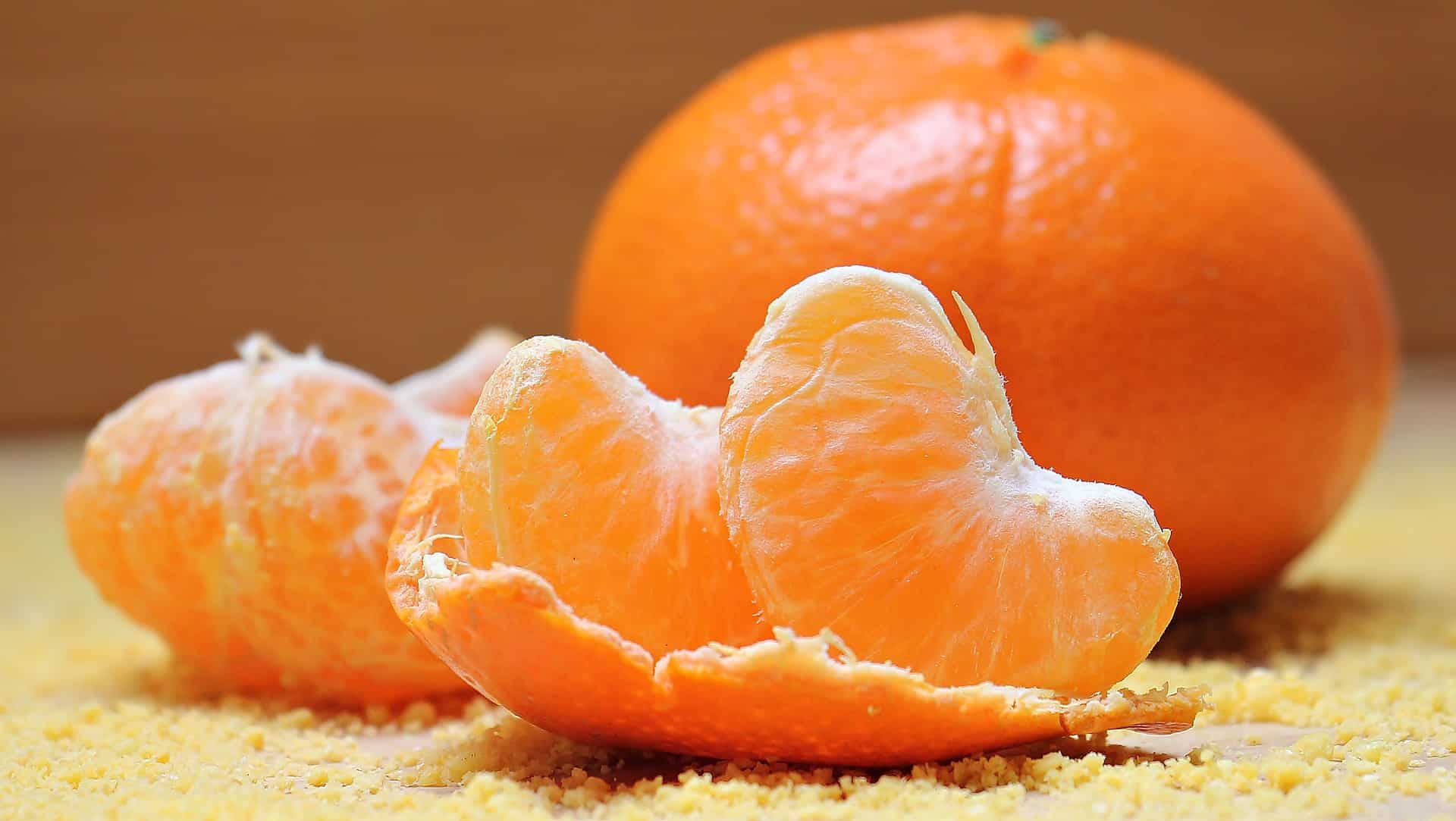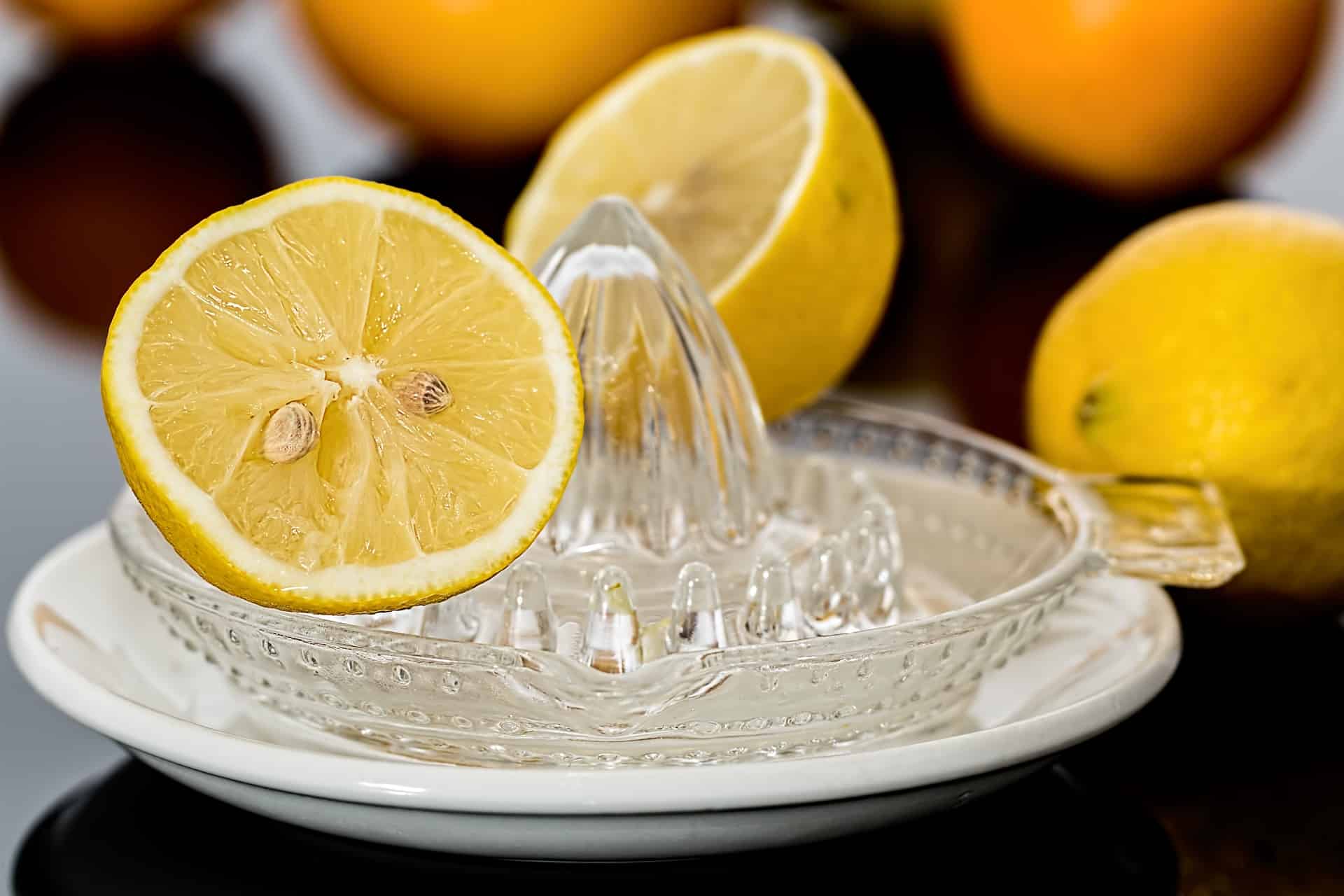
La quercetin it belongs to a group of polyphenolic substances known as flavonoids.
Flavonoids were discovered by the Hungarian scientist Albert Szent-Györgyi, the discoverer of vitamin C (he won the Nobel prize for medicine and physiology in 1937), who observed that flavonoids have a synergistic effect with vitamin C.
Quercetin is a polyphenolic molecule produced by the metabolism of some plants such as horse chestnut, calendula, hawthorn, chamomile, St. John's wort and ginkgo biloba, but also fruits, vegetables, leaves, seeds and cereals.
Properties are attributed antioxidants and anticancer, Among others.
Where can we find quercetin?
Quercetin is widely distributed in the plant kingdom: we find it in fruits, peels and rinds of apples and onions, cocoa, red fruits and broccoli. Particularly rich sources are citrus fruits, olive oil, onions, red wine, green tea, and St. John's wort.
The quercetin that is commonly used in food supplements is extracted from the buds of shopora japonica (a plant belonging to the family Fabaceae – Legumes) also known as Japanese Robinia, Japanese acacia or pagoda tree. The plant, of Asian origin (China and Korea), grows in relatively warm and temperate areas and it is also widespread in the temperate climate regions of Europe.
Given that shopora japonica is very rich in quercetin, it is possible to obtain a practically pure extract. Quercetin is the most used for metabolic and inflammatory disorders and the main activity attributed to it is antioxidant.
In fact, it helps reduce the formation of free radicals and pro-inflammatory substances, proving to be a valuable ally for our health. In addition, properties are attributed to it vasoactive since it increases the resistance of the capillaries and regulates their permeability.
Quercetin Effects
Quercetin has the following activities:
- anti-inflammatory,
- antiestrogenic,
- reduced formation of endometrial tissue,
- significant reduction in systolic blood pressure in borderline patients, particularly if they are overweight,
- antiatherosclerotic by inhibition of LDL oxidation and consequent arterial endothelial damage,
- cardio protection,
- antiviral,
- immunomodulator,
- anti allergic,
- gastroprotective.

How is quercetin taken?
Quercetin is absorbed in the intestine and its metabolites are distributed by the liver to the various tissues of the body. In plasma it binds to albumin. The plasma peak is reached approximately 7 hours after ingestion and the elimination half-life is approximately 25 hours. The availability of quercetin orally is uncertain: in fact, it appears that quercetin is better and more uniformly assimilated in the intestine if taken together with fats such as medium chain triglycerides. That is why it is important that supplements contain lipid substances and that they are taken on a full stomach.
Given that scientific studies have shown that a high intake of flavonoids reduces the risk of cardiovascular diseases and that quercetin is the most present in our diet, it is advisable to consume fruits and vegetables daily.
If in fact a sufficient amount of polyphenols is not taken or in particular health conditions in which it is necessary to take them in greater amounts, the use of food supplements can be resorted to as long as they contain standardized, titrated extracts associated with absorption promoters that favor assimilation.
In supplementation, the maximum daily intake allowed by the Ministry of Health is 200 mg daily but, thanks to the use in some products of substances that promote its absorption, a lower amount would be sufficient.
What are the natural sources of quercetin?
Quercetin is one of the most abundant dietary flavonoids, so much so that an average daily intake through the normal diet is estimated to be approximately 25-50 milligrams.
Some of the foods/foods highest in quercetin include:
- capers (in relation to weight, it is the plant that contains the most, 234 mg per 100 g of raw buds),
- buckwheat,
- white/red grapes
- red wine (in fact, in the grape, this is synthesized in both the white and red varieties, but as far as wine is concerned, it is concentrated above all in the red wine by virtue of the transformation process)
- Red onion,
- Green Tea,
- blueberry,
- Apple,
- propolis,
- celery,
- radish,
- cabbage.
- apples,
- grape,
- coffee,
- berries,
- broccoli,
- citric fruits,
- and cherries.
Most of the flavonoids in the diet come from quercetin.
The most bioavailable quercetin and therefore better assimilated is that of the apple skin.
Don't throw away the shells
It is worth remembering that in red onions the highest concentrations of quercetin are found not only in the part closest to the root, the portion of the plant with the highest concentration, but also in the outer rings. This phenomenon is quite common in nature and is a rule that should never be forgotten in the kitchen, especially when we guiltily get rid of the peels and outer layers of vegetables and fruits too easily, forgetting that they represent particularly valuable sources of bioactive substances.
El consumption of fatty foods together with dietary sources of quercetin seems to be able to increase its absorption effective, which in itself is quite limited. Also the presence of carbohydrates, thanks to the stimulation of gastrointestinal motility and fermentation phenomena in the intestine, could have a positive effect in this regard.

How does quercetin affect the immune system?
This substance has antiviral properties supported by various studies in animal models, but unfortunately to date we do not know the actual effect and action of this substance on the immune system.
In conclusion, some theories believe that it can only be beneficial under certain conditions of extreme psychophysical stress.
What is quercetin used for?
Among the indications for which it is most used are its anti-inflammatory and antioxidant properties, which have led to its use in numerous medical areas and for different purposes:
- immune system support,
- reduction of swelling,
- antitumor efficacy (in addition to preventive),
- blood sugar control,
- sports performance support
- prevention of cardiovascular diseases.
Minor signs include:
- arthritis,
- interstitial cystitis,
- prostatitis.
Quercetin has been studied in basic research (in vitro, i.e., in test tubes or borderline in animal models) and in small clinical trials (in humans), but while supplements have often been promoted for the treatment of cancer and other diseases there is currently insufficient evidence of sufficient quality to demonstrate a real measurable efficacy.
How and when to take quercetin if you practice sports?
Quercetin supplementation may slightly support resistance exercise performance.
Does quercetin have antioxidant action?
The positive function is due to the antioxidant action that helps fight free radicals.
anti-inflammatory action
According to some studies, quercetin may be helpful in counteracting inflammation, but unfortunately, even in this case, the evidence is limited at the moment.
Could it have benefits for prostatitis?
In some studies, quercetin has counteracted inflammation of the prostate.
Can it support the cardiovascular system?
Quercetin may be helpful for normal blood pressure and have other benefits for cardiovascular health.
How and when to take quercetin?
The indicated dose in some studies varies between 100 and 1.000 mg per day.
What are the contraindications and side effects of quercetin?
Given the lack of studies, it is recommended not to take quercetin during pregnancy and lactation.
It is always useful to consult your doctor before taking quercetin to choose the most appropriate therapy. The recommended dose should not be exceeded.
Hesperidin and quercetin
La hesperidin is another flavonoid that found mainly in citrus. Characterized by antioxidant effects, vasoprotective properties are attributed to it due to its action on collagen and connective tissue, so it is not uncommon to find supplements on the market that combine it with quercetin.

Hesperidin, properties and benefits
Hesperidin is a natural remedy useful for microcirculation and for disorders related to the cardiovascular system. Hemorrhoids, varicose veins, but also high cholesterol can greatly benefit from it.
Fall, citrus season, juices, vitamin C... and to think that there is a part of citrus that we do not take into account, because it is leathery, bitter, rich in essential oils: the leather. And it is precisely in the shell where find one of the most used flavonoids among antioxidant supplements, hesperidin.
Hesperidin is present in the skin and whitish skin of the underside of the peel of citrus fruits. The most interesting component of hesperidin in the pharmaceutical and herbal field is the routinedue to its vasoprotective properties.
Hesperidin Properties
The properties of hesperidin are expressed in the microcirculation, in blood vessels and beyond. Let's see better what activities this flavonoid performs:
- capillarotropic: tones the capillaries, prevents their dilation and helps to strengthen and develop the capillary structure.
- vasoprotective: exerts a toning and protective action on blood vessels, preventing their atony, stimulating venous circulation and exerting an anti-inflammatory action.
- hypocholesterolemic: it is capable of correcting metabolic disorders and promoting the production of good cholesterol, with the consequent correction of states of hypertension and the prevention of cardiovascular risks.
Hesperidin Benefits
As it is easy to understand, hesperidin can be a useful remedy to prevent and treat some disorders related to the circulation of the lower limbs, the dilation of the vessels and the peripheral microcirculation.
Who suffer venous insufficiency with different manifestations can benefit from it:
- hemorrhoids: a much-discussed problem involving internal or external vasodilation with extroflexion swelling and possible bleeding. Hesperidin counteracts atony of the vessels and above all prevents their reappearance.
- varicose or varicose veins: A bit like hemorrhoids, varicose veins are also dilated veins, a problem that usually affects the lower extremities, often aggravated by venous stasis.
Hesperidin tones the veins, promotes circulation, prevents possible serious pathologies such as phlebitis.
- fragile capillary: a disorder often evaluated only for its aesthetic impact, but which could indicate more serious pathologies, it manifests itself as a more or less extensive bluish web that can appear on the legs, but also on the face.
Hesperidin helps to strengthen the capillary walls, prevents the formation of bruises and encourages the development of networks.
- cholesterol: an evident benefit has been seen in the case of an increase in total cholesterol by studies that anticipated taking hesperidin for at least 4 weeks, with a demand for the production of good cholesterol, consequently reducing that of LDL.
How to take hesperidin
It is possible to find hesperidin as a sole remedy or in synergy with other active principles contained in butcher's broom, red vine, horse chestnut, sweet clover and gotu kola.
The recommended daily dose of hesperidin is 500 mg daily. There are no contraindications or side effectsAs a preventive measure, its use is not recommended during pregnancy and lactation.
Quercetin and COVID-19
Regarding COVID-19, quercetin has been shown to act on 3CLpro, one of the essential proteins for the replication of the SARS-Cov-2 virus, destabilizing it and possibly hindering its replication.

My opinion
Researchers' interest in quercetin and, more generally, in other flavonoids contained in fruits and vegetables is evident. We also see clearly that subjects accustomed to a high consumption of fruits and vegetables tend to guarantee a reduction in the risk of develop some forms of cancer. Studies in test tubes and animal models demonstrate some anticancer properties of flavonoids (quercetin and other flavonoids inhibit cancer cell growth in breast, colon, prostate, ovarian, endometrial, and lung cancers), but it is the writer's opinion that the lack of equally evident effect in humans is probably related to the fact that quercetin acts as a whole in a complex synergistic effect involving numerous (hundreds? thousands?) other substances active substances contained in fruits and vegetables, and which can show a tangible effect only when consumed constantly and in abundant quantities, so as to ensure persistently high concentrations in the blood despite the short half-life of these substances.
In simpler words, I believe that the key to a real preventive effect is in the daily consumption of fruits and vegetables, rather than in the myopic attempt to reproduce their effects in tablet form.
Action mechanisms
Quercetin has long attracted the interest of researchers for its ability to act as a natural inhibitor of many human enzymes. Enzymes are substances (generally of a protein nature) capable of promoting the speed of a chemical reaction, sometimes dramatically accelerating it (so much so that in the absence of the enzyme the reaction would take so long that it would not even be considered ongoing).
Therefore, quercetin is capable of block or slow down these reactions, including:
- conversion of testosterone to dihydrotestosterone
- conversion of androgens to estrogens
- synthesis of leukotrienes and arachidonic acid (involved in inflammatory phenomena)
- different biochemical pathways related to cell proliferation.
Thanks to this last property, it is often the center of attention when it comes to cancer research, that is, the search for molecules that can become potential antitumor drugs.
The bioavailability of quercetin in humans, that is, the amount that once consumed actually enters the bloodstream, is generally low and highly variable at best (0-50%).
The reasons for the discrepancy in effects between the test tube/organism are not always clear, but among the most accredited hypotheses, the difference in bioavailability between the food form and the form typically used for the preparation of supplements (aglycone, while in food is in use) stands out. glycoside form).
It is then rapidly eliminated, such that the half-life (the time it takes to see a halving of the concentration in the blood) is only 1-2 hours (regardless of whether the source is a food or a supplement). Also for this reason, many researchers are actually convinced that the consumption of food does not allow the substance to exhibit the effects observed in vitro (laboratory).
Quercetin Side Effects
Quercetin is considered reasonably safe for food consumption, so much so that in 2010 the US FDA recognized it as safe even in additive form up to doses of 500 milligrams per serving.
In the case of the doses present in supplements, the evaluation is more complex (also because many times these are formulations designed for daily intake and not occasional as in food) and there is an insufficient amount of toxicological research work. (ie focused on the safety of the molecule) to draw definitive conclusions.
Some sources report the possible development of headaches and gastrointestinal disorders.
In general, although some authors raise concerns (for example in relation to a possible risk of promoting hormone-dependent tumors), quercetin is still considered safe at the doses normally expected for supplementation in adults.
Contraindications
Due to the precautionary principle (there is no evidence of danger or safety) it is recommended to avoid taking supplements in case of:
- pregnant and lactating women,
- children and adolescents.
However, it is contraindicated in patients with known kidney problems.
Drug interactions
Quercetin is a potent inhibitor of the cytochrome P3 enzymes CYP4A2 and CYP6D450, one of the most important mechanisms in the metabolism of many drugs. This means that drugs that use this mechanism to be eliminated could suffer from a potentiation of effects, with a greater risk of experiencing side effects. In other words, It is recommended NOT to take quercetin-based supplements if you take medications metabolized by these enzymess (usually highlighted in the package insert, precisely because they are so common).
There are other precautions that must be taken with respect to specific classes of drugs, for example:
- medicines for high blood pressure (since some authors suggest a possible hypotensive effect, the association with medicines taken for the same purpose could result in an exacerbation of the effects),
- medications for diabetes (idem).